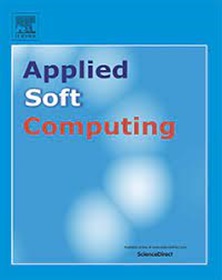Multi-source manifold space domain adaptation with a full-thresholding residual network for machinery fault diagnosis
IF 6.6
1区 计算机科学
Q1 COMPUTER SCIENCE, ARTIFICIAL INTELLIGENCE
引用次数: 0
Abstract
Unsupervised multi-source domain adaptation, which has been intensively investigated in recent years, is promising in handling fault diagnosis tasks when no labeling is available on the target datasets. Most approaches aim to learn the domain-invariant features of all domains in common feature spaces. However, addressing practical scenarios in which data comes from multiple domains with large shifts remains challenging. Hence, a new multi-source manifold space domain adaptation method (MMSDA) with a full-thresholding residual network is proposed for machinery fault diagnosis, in which specific domain-invariant features of the source and target domains are learned. First, a full-thresholding residual convolutional neural network (FTRCNN) is designed to extract useful features from both source and target domains, which are then projected into a specific domain feature space. Then, the proposed manifold neighbor consistency (MNC) domain alignment algorithm maps the feature space to a manifold space, ensuring that the samples maintain local neighbor geometric relations. Additionally, multi-kernel maximum mean discrepancy is used to reduce the inter-domain differences. Thus, the specific domain-invariant features of each source and target domain pair in the manifold feature space are extracted. Finally, the domain-specific classifier consistency (DSCC) loss is designed to minimize the shifts in all classifiers. Through experiments on three benchmarks, the proposed method demonstrates promising results on popular rotating machinery datasets for fault diagnosis.
基于全阈值残差网络的多源流形空间域自适应机械故障诊断
无监督多源域自适应是近年来研究较多的一种故障诊断方法,在目标数据集无标记情况下具有较好的应用前景。大多数方法的目的是学习公共特征空间中所有域的域不变特征。然而,解决数据来自多个大变化领域的实际场景仍然具有挑战性。为此,提出了一种基于全阈值残差网络的多源流形空间域自适应方法(MMSDA),该方法学习源域和目标域的特定域不变特征。首先,设计一个全阈值残差卷积神经网络(FTRCNN),从源域和目标域提取有用的特征,然后将这些特征投影到特定的域特征空间中。然后,提出的流形邻居一致性(MNC)域对齐算法将特征空间映射到流形空间,保证样本保持局部邻居几何关系。此外,采用多核最大均值差异来减小域间差异。从而提取流形特征空间中每个源域和目标域对的特定域不变特征。最后,设计了特定领域分类器一致性(DSCC)损失,以最小化所有分类器的移位。通过在三个基准上的实验,该方法在常用的旋转机械数据集上显示了良好的故障诊断效果。
本文章由计算机程序翻译,如有差异,请以英文原文为准。
求助全文
约1分钟内获得全文
求助全文
来源期刊

Applied Soft Computing
工程技术-计算机:跨学科应用
CiteScore
15.80
自引率
6.90%
发文量
874
审稿时长
10.9 months
期刊介绍:
Applied Soft Computing is an international journal promoting an integrated view of soft computing to solve real life problems.The focus is to publish the highest quality research in application and convergence of the areas of Fuzzy Logic, Neural Networks, Evolutionary Computing, Rough Sets and other similar techniques to address real world complexities.
Applied Soft Computing is a rolling publication: articles are published as soon as the editor-in-chief has accepted them. Therefore, the web site will continuously be updated with new articles and the publication time will be short.
 求助内容:
求助内容: 应助结果提醒方式:
应助结果提醒方式:


